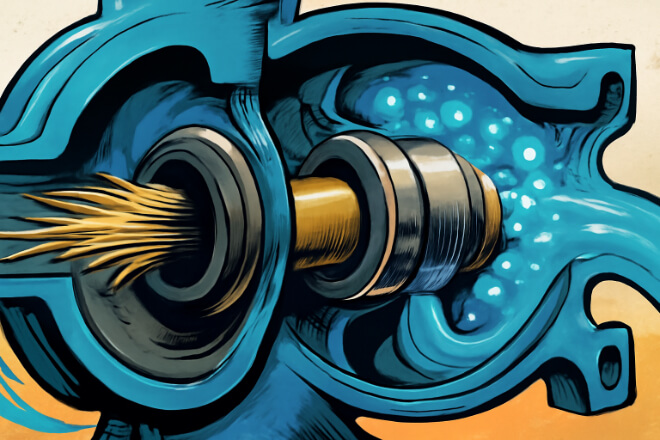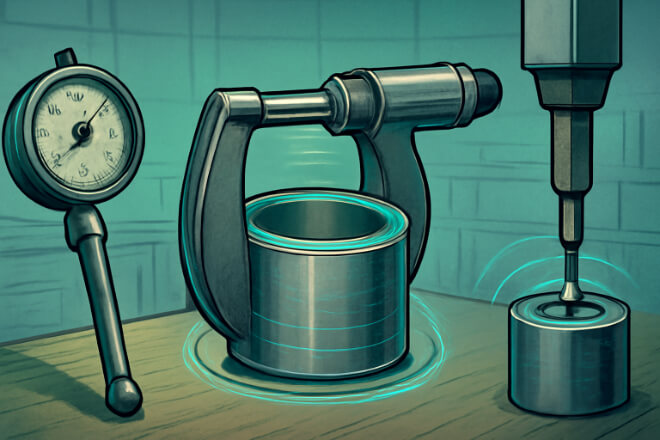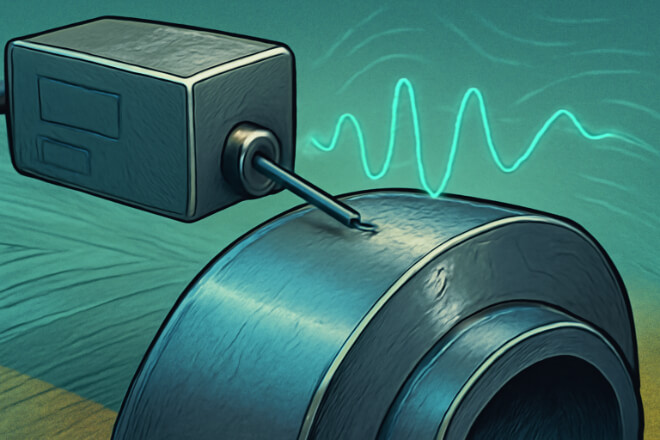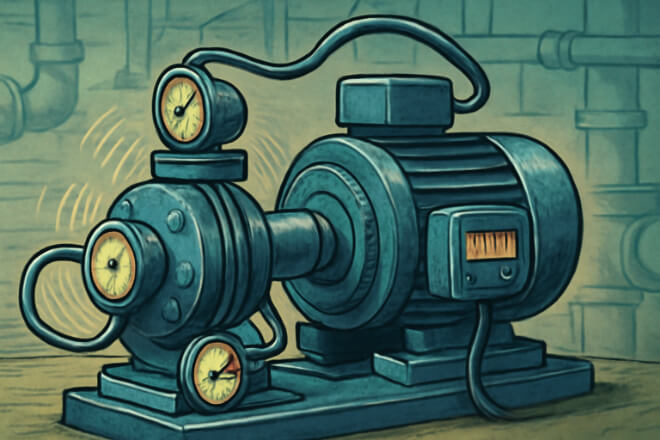Pump bushings made of tungsten carbide work under high speed, high pressure, and aggressive fluids.
In these harsh conditions, two common failure modes appear again and again: erosion and cavitation damage. Both can cause early wear, vibration, leakage, and even shutdown of the pump.
This article explains how to detect these problems early, why they occur, and what signs decision-makers should watch for to protect their equipment and reduce downtime.
Understanding Erosion and Cavitation in Pump Bushings

Erosion and cavitation look similar at first glance, but they come from very different causes.
Understanding the difference helps engineers choose the right materials, improve operation conditions, and prevent damage before it becomes serious.
1). Erosion
Erosion occurs when high-velocity liquid or solid particles strike the bushing surface repeatedly.
Common causes include:
Dirty fluid with sand or hard particles
High flow velocity
Sharp directional changes inside the pump
Poor filtration systems
Erosion usually creates:
Smooth wear marks
Directional grooves
Gradual material loss
2). Cavitation
Cavitation happens when pressure drops inside the pump, forming vapor bubbles.
When these bubbles collapse near the bushing surface, they create tiny shock waves. Over time, these micro-explosions damage the material.
Cavitation damage usually creates:
Pitting
Small round holes
Rough, crater-like surface
Rapid material loss in local areas
Key Warning Signs of Erosion and Cavitation Damage
Below is a summary of how erosion and cavitation appear inside pumps:
| Type of Damage | Typical Appearance | Common Causes | Risk Level |
|---|---|---|---|
| Erosion | Grooves, directional wear, smooth scars | High velocity, particles in liquid, poor filtration | Medium to High |
| Cavitation | Pitting, small round holes, crater patterns | Low inlet pressure, vapor bubbles, pump instability | High (rapid damage) |
Both issues can quickly lead to misalignment, friction, and leaks if not detected early.
Visual Inspection: First Step in Detecting Damage

A physical inspection of the bushing surface provides the fastest way to identify early-stage problems.
1). Signs of Erosion
Surface becomes smooth but heavily scratched
Wear follows the flow direction
Profile becomes out-of-round
Edges look thinner or tapered
2). Signs of Cavitation
Clusters of tiny pits
Rough, crater-like texture
Localized damage near inlet or low-pressure zones
Areas appear “eaten away”
Visual inspection should be done during:
Routine pump overhaul
Scheduled maintenance
After vibration alarms
When pump efficiency drops
Even without tools, an experienced engineer can identify many problems at this stage.
Measuring Dimensional Wear and Out-of-Round Conditions

Once visual signs appear, the next step is precise dimensional measurement.
1). Tools Used
Bore gauge
Micrometer
Coordinate Measuring Machine (CMM)
Roundness tester
2). Why It Matters
Pump bushings must maintain a constant clearance between shaft and housing. Too much wear from erosion or cavitation may cause:
Shaft instability
Excess vibration
Mechanical seal leaks
Faster wear on mating parts
3). Typical Tolerances
Roundness: Within 0.005–0.02 mm
Diameter deviation: Within ±0.002–0.005 mm (depending on pump design)
Dimensional checks help determine if the bushing can continue in service or needs replacement.
Using Surface Roughness Testing to Identify Early Damage

Surface roughness values reveal early degradation long before failure occurs.
1). Tools
Contact profilometer
Optical profilometer
2). Early Erosion Detection
Erosion increases surface roughness gradually over time. Typical safe Ra value for pump bushings:
Ra ≤ 0.2 µm for sliding bearing surfaces
When erosion starts:
Ra increases to 0.3–0.4 µm
Flow marks become more visible
Friction increases
3). Early Cavitation Detection
Cavitation creates rapid changes:
Ra jumps to 1.0 µm or higher
Sharp peaks appear in the roughness profile
Surface becomes “spiky”
Surface roughness testing can detect these changes weeks or months before total failure.
Non-Destructive Testing (NDT) for Hidden Damage
Some cavitation pits or erosion channels may not be visible to the naked eye. NDT methods help reveal internal or subsurface damage.
| Method | Best For | Damage Type | Advantages |
|---|---|---|---|
| Ultrasonic Testing (UT) | Internal defects | Deep cavitation pits, cracks | Fast and accurate |
| Dye Penetrant Inspection (DPI) | Surface defects | Micro-pitting, small cracks | Low cost |
| X-ray CT Scan | 3D analysis | Internal erosion channels | Highly detailed |
These tests help engineers detect early-stage damage that visual inspection may miss.
Monitoring Pump Performance to Detect Early Wear

Many early signs of erosion and cavitation appear not on the bushing itself, but in pump performance.
1). Key Indicators
Increase in vibration
Higher energy consumption
Reduced flow or pressure
Unstable operation
Noise caused by cavitation
Rising temperature around bearing housing
2). Why Decision-Makers Should Track These Indicators
These signals allow maintenance teams to predict failure before it happens.
Predictive monitoring reduces downtime, protects shafts and seals, and lowers repair costs.
When Should a Pump Bushing Be Replaced?

A bushing showing mild wear may still run safely, but deeper erosion or active cavitation requires action.
1). Replace Immediately If:
Cavitation pits cluster in critical load areas
Erosion removes more than 10–15% of wall thickness
Roundness is outside allowable tolerance
Ra exceeds recommended value
Vibration levels rise sharply
Pump becomes noisy or unstable
2). Why Quick Replacement Matters
Ignoring these signs can lead to:
Shaft scoring
Seal failure
Bearing seizure
Full pump breakdown
Replacing a damaged bushing is far cheaper than repairing a failed pump.
Conclusion
Erosion and cavitation are two of the most common causes of pump bushing failure.
With the right inspection tools and monitoring methods, these issues can be detected early—long before they lead to downtime or costly repairs.
For decision-makers, investing in proper testing and early detection ensures longer equipment life, higher reliability, and lower maintenance costs.
If you want to know more details about any company, please feel free to contact us.
